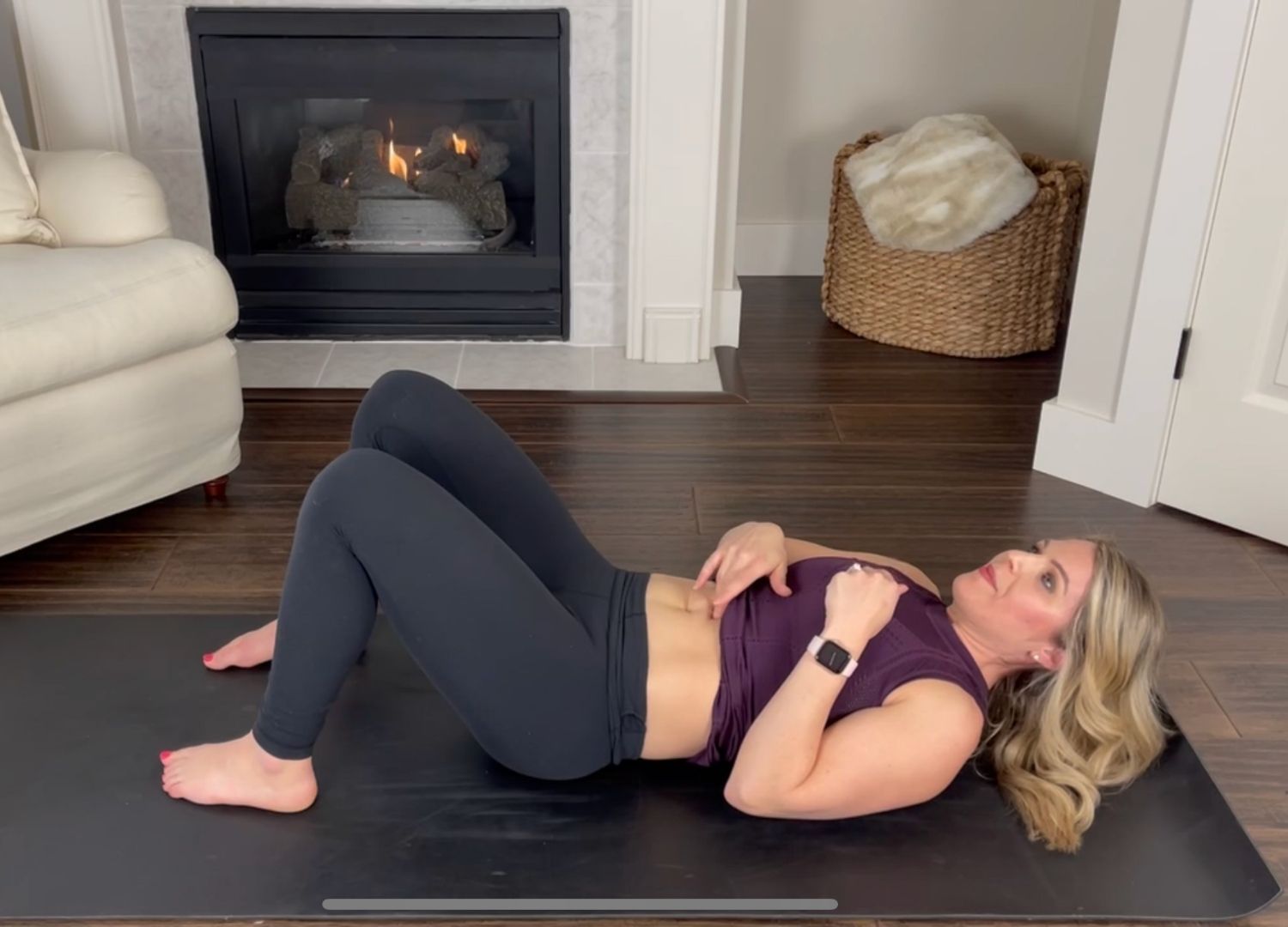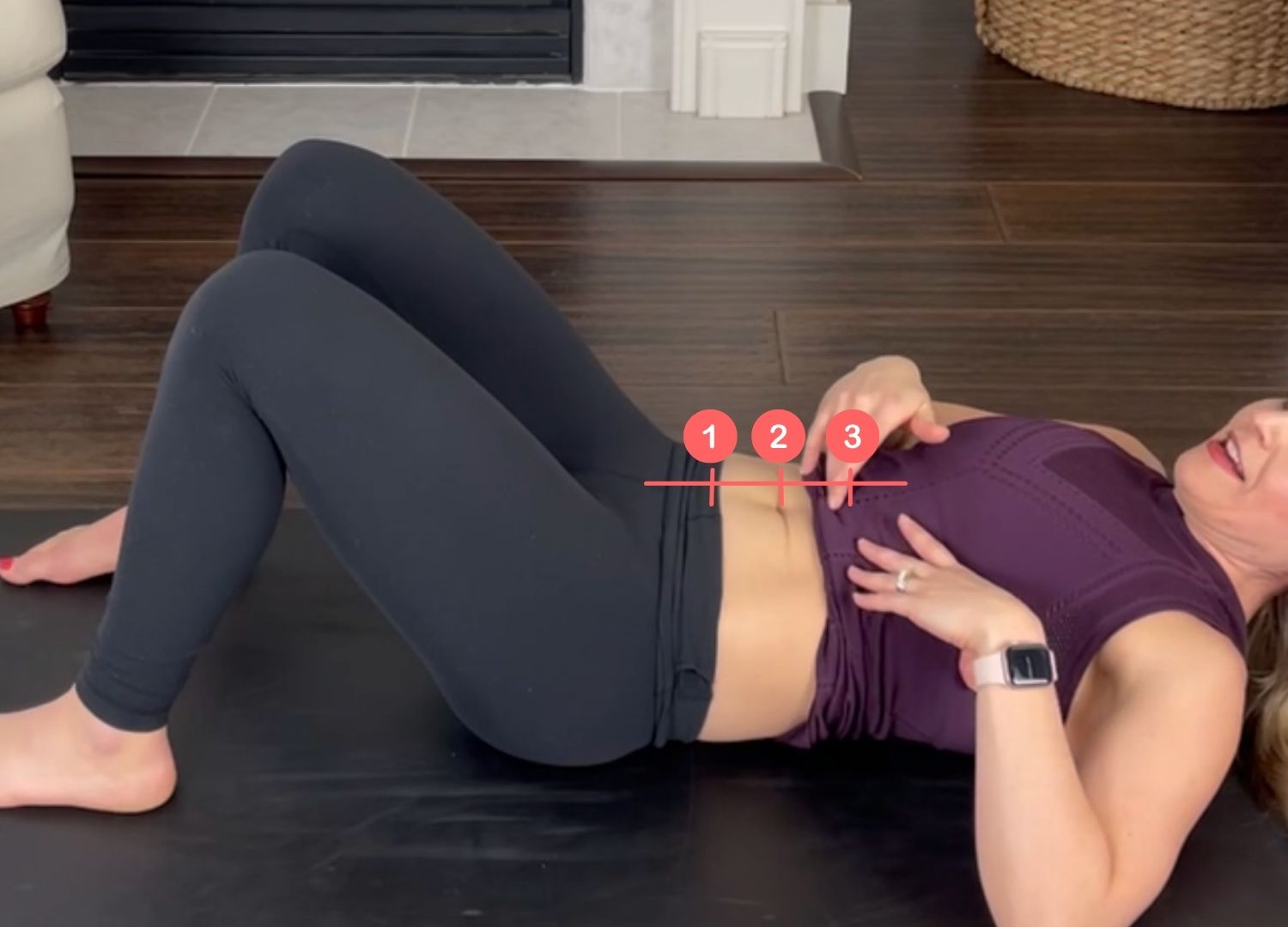No products in the cart.
How to Start a fitness journeyIf you are new to fitness and feel overwhelmed and confused, you are not alone. With so
Work with us 1 on 1 to reach your goals Apply Now!
By: Deanna Holcomb
Diastasis Recti has become somewhat of a buzzword when it comes to postpartum. You may have heard of it before, or the term may be completely new to you. In this post, we cover how to test for diastasis and what it is.
Diastasis recti is the separation of abdominal muscles that occurs commonly during pregnancy. The rectus muscles are the “6 pack” muscles that run vertically down the center of your stomach. These muscles have two sides and are connected via the linea alba (fibrous connective tissue).
During pregnancy and delivery, these muscles stretch and often separate to accommodate the growing baby. This abdominal separation is normal. After delivery, many women will notice symptoms of diastasis recti. These symptoms include, but are not limited to; back pain, poor posture, pelvic floor dysfunction, weakness in the abdominals, pelvic pain, hip pain, belly pooching (mummy tummy), and being prone to injury.
Even though diastasis recti is most common in pregnant women; men, babies, and women who have never had children before can suffer from diastasis as well. Improper pressure management during exercise, poor posture, excess weight, and lack of muscle development in babies can all lead to diastasis.
Abdominal separation can heal on its own, however for many women it does not. Following an exercise program to heal diastasis is a great way to learn how to correct this condition, and strengthen your body along the way. Everything is connected after all, and other areas of weakness in the body can actually contribute to a lingering abdominal separation.
If you suspect that you may have diastasis recti, you can easily check yourself from the comfort of your own home. When assessing yourself, it is important to not only check the width of your separation but the depth as well. Many women will never be able to fully close their abdominal separation, but the ability to generate tension and firmness down the midline of their belly tells us how the deep core muscles are firing. This activation of the deep core is more important in the functional healing of diastasis. This is why it’s even more important to focus on the depth and not just the width.

Lay on your back with your knees bent and your pelvis in a neutral position. Your head should be resting comfortably on the floor.

Inhale and then exhale as you barely lift your head off of the ground like you are nodding yes. Feel the two ridges of the rectus abdominal muscles and place your fingers on either side to assess how far apart they may be. This number can vary wildly. Anything under a two-finger width is considered perfectly normal. However, you may find that this number is much larger which technically indicates diastasis recti. When you are checking, make sure that you are not raising your shoulders too far off of the ground. This should not be a crunch. When you perform a full crunch, your rectus muscles will activate too much and your separation will appear much smaller than it truly is.

Make sure to check the separation in three places. Check at your belly button, midway between your belly button and pubic bone, and midway between belly button and sternum. It is common for the separation in each of these places to feel different. Record your separation measured in finger width.

Lay your head down and reset, and check again in each of the three spaces. This time stick your fingers into the separation (only if you can). Note the depth that your finger can go in. Note the depth in “knuckles” (ie. one knuckle, two knuckles, or deeper). Record the depth. When assessing your depth, be gentle. You are looking for resistance against your fingers. Does the middle feel squishy like the fleshy part of your cheek, or does it feel firm like the part of your cheek directly on top of your cheekbone? Your goal is to be able to generate firmness which indicates your deep core muscles are firing.
If you find that you have diastasis, do not be discouraged. There are many things you can do to help heal diastasis or help you learn how to live with it. Remember that diastasis is normal in the early postpartum period, and this is a great time to start working on gentle exercises to strengthen your body.
If you have had diastasis for a long time, know that it is never too late to heal. By learning how to manage pressure in your core and strengthen those muscles you can improve your diastasis too and lessen or even eliminate the symptoms it causes. Check out this past post for some of our favorite exercises to help heal diastasis recti.
Explore our course to help heal your diastasis.
Tags
How to Start a fitness journeyIf you are new to fitness and feel overwhelmed and confused, you are not alone. With so
As a busy mom, it can be challenging to find time to focus on your own health and fitness goals. With so
Diastasis Recti and Abdominal Coning and Doming During pregnancy and postpartum your abdominals undoubtedly took many different forms. If you have ever
Check out our programs and pricing!
Session expired
Please log in again. The login page will open in a new tab. After logging in you can close it and return to this page.